-
EXECUTIVE SUMMARY
-
MARKET INTRODUCTION
-
Definition
-
Scope of the Study
- Research
- Assumptions
- Limitations
-
Objective
-
3.
-
RESEARCH METHODOLOGY
-
Overview
-
Data Mining
-
Secondary Research
-
Primary Research
- Primary
- Breakdown of Primary
-
Interviews and Information Gathering Process
-
Respondents
-
Forecasting Model
-
Market Size Estimation
- Bottom-Up Approach
- Top-Down Approach
-
3.7.
-
Data Triangulation
-
Validation
-
MARKET DYNAMICS
-
Overview
-
Drivers
-
Restraints
-
4.4.
-
Opportunities
-
MARKET FACTOR ANALYSIS
-
Value Chain Analysis
-
Porter’s Five Forces Analysis
- Bargaining Power
- Bargaining Power of Buyers
- Threat
- Threat of Substitutes
- Intensity
-
of Suppliers
-
of New Entrants
-
of Rivalry
-
COVID-19 Impact Analysis
- Market Impact
- Regional Impact
- Opportunity and Threat
-
Analysis
-
Analysis
-
GLOBAL JOINT COMPOUND MARKET, BY PRODUCT TYPE
-
6.1.
-
Overview
-
Ready Mix
-
Setting Type
-
6.4.
-
Drying Type
-
GLOBAL JOINT COMPOUND MARKET, BY END USE
-
7.1.
-
Overview
-
Residential Construction
-
Commercial Construction
-
Institutional Construction
-
Industrial Construction
-
GLOBAL JOINT COMPOUND MARKET, BY APPLICATION
-
Overview
-
New Construction
-
Refurbishments
-
GLOBAL
-
JOINT COMPOUND MARKET, BY REGION
-
Overview
-
North
- US
- Canada
-
America
-
Europe
- Germany
- France
- UK
- Spain
- Rest of Europe
-
9.2.4.
-
Italy
-
Asia-Pacific
- China
- India
- Japan
- Australia
- Rest of Asia-Pacific
-
9.3.4.
-
South Korea
-
Rest of the World
- Middle East
- Africa
- Latin America
-
COMPETITIVE LANDSCAPE
-
10.1.
-
Overview
-
Competitive Analysis
-
Market Share Analysis
-
Major Growth Strategy in the Global Joint Compound Market,
-
Competitive Benchmarking
-
Leading Players in Terms of Number
-
of Developments in the Global Joint Compound Market,
-
Key developments
- New Product Launch/Service Deployment
- Merger & Acquisitions
- Joint Ventures
-
and Growth Strategies
-
Major Players Financial Matrix
- Sales & Operating
- Major Players R&D Expenditure. 2022
-
Income, 2022
-
COMPANY PROFILES
-
Knauf Gypsum Pty Ltd.
- Financial Overview
- Products
- Key Developments
- SWOT Analysis
- Key Strategies
-
11.1.1.
-
Company Overview
-
Offered
-
DAP Products Inc.
- Financial Overview
- Products
- Key Developments
- SWOT Analysis
- Key Strategies
-
11.2.1.
-
Company Overview
-
Offered
-
Solid Products, Inc.
- Financial Overview
- Products
- Key Developments
- SWOT Analysis
- Key Strategies
-
11.3.1.
-
Company Overview
-
Offered
-
ProForm Finishing Products LLC
- Company Overview
- Financial Overview
- Products Offered
- Key Developments
- Key Strategies
-
11.4.5.
-
SWOT Analysis
-
Compagnie de Saint-Gobain
- Company Overview
- Financial Overview
- Products Offered
- Key Developments
- Key Strategies
-
S.A.
-
11.5.5.
-
SWOT Analysis
-
Freeman Products,
- Company Overview
- Financial Overview
- Products Offered
- Key Developments
- Key Strategies
-
Inc.
-
11.6.5.
-
SWOT Analysis
-
Supermastick S.A.S
- Company Overview
- Financial Overview
- Products Offered
- Key Developments
- Key Strategies
-
11.7.5.
-
SWOT Analysis
-
Hamilton Drywall
- Company Overview
- Financial Overview
- Products Offered
- Key Developments
- Key Strategies
-
Products
-
11.8.5.
-
SWOT Analysis
-
ASG Plaster
- Company Overview
- Financial Overview
- Products Offered
- Key Developments
- Key Strategies
-
11.9.5.
-
SWOT Analysis
-
India Gypsum Pvt.
- Company Overview
- Financial Overview
- Products Offered
- Key Developments
- SWOT Analysis
- Key Strategies
-
Ltd
-
APPENDIX
-
References
-
Related Reports
-
LIST OF TABLES
-
GLOBAL JOINT COMPOUND MARKET, SYNOPSIS, 2025-2034
-
TABLE
-
GLOBAL JOINT COMPOUND MARKET, ESTIMATES & FORECAST, 2025-2034 (USD BILLION)
-
GLOBAL JOINT COMPOUND MARKET, BY PRODUCT TYPE, 2025-2034 (USD BILLION)
-
GLOBAL JOINT COMPOUND MARKET, BY END USE, 2025-2034 (USD BILLION)
-
GLOBAL JOINT COMPOUND MARKET, BY APPLICATION, 2025-2034 (USD BILLION)
-
NORTH AMERICA: JOINT COMPOUND MARKET, BY PRODUCT TYPE, 2025-2034
-
(USD BILLION)
-
NORTH AMERICA: JOINT COMPOUND MARKET, BY END USE,
-
NORTH AMERICA: JOINT COMPOUND MARKET,
-
BY APPLICATION, 2025-2034 (USD BILLION)
-
US: JOINT COMPOUND MARKET,
-
BY PRODUCT TYPE, 2025-2034 (USD BILLION)
-
US: JOINT COMPOUND
-
MARKET, BY END USE, 2025-2034 (USD BILLION)
-
US: JOINT COMPOUND
-
MARKET, BY APPLICATION, 2025-2034 (USD BILLION)
-
CANADA: JOINT
-
COMPOUND MARKET, BY PRODUCT TYPE, 2025-2034 (USD BILLION)
-
CANADA:
-
JOINT COMPOUND MARKET, BY END USE, 2025-2034 (USD BILLION)
-
CANADA:
-
JOINT COMPOUND MARKET, BY APPLICATION, 2025-2034 (USD BILLION)
-
TABLE
-
EUROPE: JOINT COMPOUND MARKET, BY PRODUCT TYPE, 2025-2034 (USD BILLION)
-
EUROPE: JOINT COMPOUND MARKET, BY END USE, 2025-2034 (USD BILLION)
-
EUROPE: JOINT COMPOUND MARKET, BY APPLICATION, 2025-2034 (USD BILLION)
-
GERMANY: JOINT COMPOUND MARKET, BY PRODUCT TYPE, 2025-2034 (USD
-
BILLION)
-
GERMANY: JOINT COMPOUND MARKET, BY END USE, 2025-2034
-
(USD BILLION)
-
GERMANY: JOINT COMPOUND MARKET, BY APPLICATION,
-
FRANCE: JOINT COMPOUND MARKET, BY PRODUCT
-
TYPE, 2025-2034 (USD BILLION)
-
FRANCE: JOINT COMPOUND MARKET,
-
BY END USE, 2025-2034 (USD BILLION)
-
FRANCE: JOINT COMPOUND MARKET,
-
BY APPLICATION, 2025-2034 (USD BILLION)
-
ITALY: JOINT COMPOUND
-
MARKET, BY PRODUCT TYPE, 2025-2034 (USD BILLION)
-
ITALY: JOINT
-
COMPOUND MARKET, BY END USE, 2025-2034 (USD BILLION)
-
ITALY:
-
JOINT COMPOUND MARKET, BY APPLICATION, 2025-2034 (USD BILLION)
-
TABLE
-
SPAIN: JOINT COMPOUND MARKET, BY PRODUCT TYPE, 2025-2034 (USD BILLION)
-
SPAIN: JOINT COMPOUND MARKET, BY END USE, 2025-2034 (USD BILLION)
-
SPAIN: JOINT COMPOUND MARKET, BY APPLICATION, 2025-2034 (USD BILLION)
-
UK: JOINT COMPOUND MARKET, BY PRODUCT TYPE, 2025-2034 (USD BILLION)
-
UK: JOINT COMPOUND MARKET, BY END USE, 2025-2034 (USD BILLION)
-
UK: JOINT COMPOUND MARKET, BY APPLICATION, 2025-2034 (USD BILLION)
-
REST OF EUROPE: JOINT COMPOUND MARKET, BY PRODUCT TYPE, 2025-2034
-
(USD BILLION)
-
REST OF EUROPE: JOINT COMPOUND MARKET, BY END
-
USE, 2025-2034 (USD BILLION)
-
REST OF EUROPE: JOINT COMPOUND
-
MARKET, BY APPLICATION, 2025-2034 (USD BILLION)
-
ASIA-PACIFIC:
-
JOINT COMPOUND MARKET, BY PRODUCT TYPE, 2025-2034 (USD BILLION)
-
TABLE
-
ASIA-PACIFIC: JOINT COMPOUND MARKET, BY END USE, 2025-2034 (USD BILLION)
-
ASIA-PACIFIC: JOINT COMPOUND MARKET, BY APPLICATION, 2025-2034 (USD BILLION)
-
JAPAN: JOINT COMPOUND MARKET, BY PRODUCT TYPE, 2025-2034 (USD BILLION)
-
JAPAN: JOINT COMPOUND MARKET, BY END USE, 2025-2034 (USD BILLION)
-
JAPAN: JOINT COMPOUND MARKET, BY APPLICATION, 2025-2034 (USD BILLION)
-
CHINA: JOINT COMPOUND MARKET, BY PRODUCT TYPE, 2025-2034 (USD BILLION)
-
CHINA: JOINT COMPOUND MARKET, BY END USE, 2025-2034 (USD BILLION)
-
CHINA: JOINT COMPOUND MARKET, BY APPLICATION, 2025-2034 (USD BILLION)
-
INDIA: JOINT COMPOUND MARKET, BY PRODUCT TYPE, 2025-2034 (USD BILLION)
-
INDIA: JOINT COMPOUND MARKET, BY END USE, 2025-2034 (USD BILLION)
-
INDIA: JOINT COMPOUND MARKET, BY APPLICATION, 2025-2034 (USD BILLION)
-
AUSTRALIA: JOINT COMPOUND MARKET, BY PRODUCT TYPE, 2025-2034 (USD
-
BILLION)
-
AUSTRALIA: JOINT COMPOUND MARKET, BY END USE, 2025-2034
-
(USD BILLION)
-
AUSTRALIA: JOINT COMPOUND MARKET, BY APPLICATION,
-
SOUTH KOREA: JOINT COMPOUND MARKET,
-
BY PRODUCT TYPE, 2025-2034 (USD BILLION)
-
SOUTH KOREA: JOINT
-
COMPOUND MARKET, BY END USE, 2025-2034 (USD BILLION)
-
SOUTH KOREA:
-
JOINT COMPOUND MARKET, BY APPLICATION, 2025-2034 (USD BILLION)
-
TABLE
-
REST OF ASIA-PACIFIC: JOINT COMPOUND MARKET, BY PRODUCT TYPE, 2025-2034 (USD
-
BILLION)
-
REST OF ASIA-PACIFIC: JOINT COMPOUND MARKET, BY END
-
USE, 2025-2034 (USD BILLION)
-
REST OF ASIA-PACIFIC: JOINT COMPOUND
-
MARKET, BY APPLICATION, 2025-2034 (USD BILLION)
-
REST OF THE
-
WORLD: JOINT COMPOUND MARKET, BY PRODUCT TYPE, 2025-2034 (USD BILLION)
-
REST OF THE WORLD: JOINT COMPOUND MARKET, BY END USE, 2025-2034 (USD
-
BILLION)
-
REST OF THE WORLD: JOINT COMPOUND MARKET, BY APPLICATION,
-
MIDDLE EAST: JOINT COMPOUND MARKET,
-
BY PRODUCT TYPE, 2025-2034 (USD BILLION)
-
MIDDLE EAST: JOINT
-
COMPOUND MARKET, BY END USE, 2025-2034 (USD BILLION)
-
MIDDLE
-
EAST: JOINT COMPOUND MARKET, BY APPLICATION, 2025-2034 (USD BILLION)
-
TABLE
-
AFRICA: JOINT COMPOUND MARKET, BY PRODUCT TYPE, 2025-2034 (USD BILLION)
-
AFRICA: JOINT COMPOUND MARKET, BY END USE, 2025-2034 (USD BILLION)
-
AFRICA: JOINT COMPOUND MARKET, BY APPLICATION, 2025-2034 (USD BILLION)
-
LATIN AMERICA: JOINT COMPOUND MARKET, BY PRODUCT TYPE, 2025-2034
-
(USD BILLION)
-
LATIN AMERICA: JOINT COMPOUND MARKET, BY END USE,
-
LATIN AMERICA: JOINT COMPOUND MARKET,
-
BY APPLICATION, 2025-2034 (USD BILLION)
-
LIST OF FIGURES
-
FIGURE
-
RESEARCH PROCESS
-
MARKET STRUCTURE FOR THE GLOBAL JOINT COMPOUND
-
MARKET
-
MARKET DYNAMICS FOR THE GLOBAL JOINT COMPOUND MARKET
-
GLOBAL JOINT COMPOUND MARKET, SHARE (%), BY PRODUCT TYPE, 2022
-
GLOBAL JOINT COMPOUND MARKET, SHARE (%), BY END USE, 2022
-
GLOBAL JOINT COMPOUND MARKET, SHARE (%), BY APPLICATION, 2022
-
GLOBAL JOINT COMPOUND MARKET, SHARE (%), BY REGION, 2022
-
FIGURE
-
NORTH AMERICA: JOINT COMPOUND MARKET, SHARE (%), BY REGION, 2022
-
FIGURE
-
EUROPE: JOINT COMPOUND MARKET, SHARE (%), BY REGION, 2022
-
FIGURE 10
-
ASIA-PACIFIC: JOINT COMPOUND MARKET, SHARE (%), BY REGION, 2022
-
FIGURE
-
REST OF THE WORLD: JOINT COMPOUND MARKET, SHARE (%), BY REGION, 2022
-
GLOBAL JOINT COMPOUND MARKET: COMPANY SHARE ANALYSIS, 2022 (%)
-
KNAUF GYPSUM PTY LTD.: FINANCIAL OVERVIEW SNAPSHOT
-
FIGURE
-
KNAUF GYPSUM PTY LTD.: SWOT ANALYSIS
-
DAP PRODUCTS INC.:
-
FINANCIAL OVERVIEW SNAPSHOT
-
DAP PRODUCTS INC.: SWOT ANALYSIS
-
SOLID PRODUCTS, INC.: FINANCIAL OVERVIEW SNAPSHOT
-
FIGURE
-
SOLID PRODUCTS, INC.: SWOT ANALYSIS
-
PROFORM FINISHING PRODUCTS
-
LLC: FINANCIAL OVERVIEW SNAPSHOT
-
PROFORM FINISHING PRODUCTS
-
LLC: SWOT ANALYSIS
-
COMPAGNIE DE SAINT-GOBAIN S.A.: FINANCIAL
-
OVERVIEW SNAPSHOT
-
COMPAGNIE DE SAINT-GOBAIN S.A.: SWOT ANALYSIS
-
FREEMAN PRODUCTS, INC.: FINANCIAL OVERVIEW SNAPSHOT
-
FIGURE
-
FREEMAN PRODUCTS, INC.: SWOT ANALYSIS
-
SUPERMASTICK S.A.S:
-
FINANCIAL OVERVIEW SNAPSHOT
-
SUPERMASTICK S.A.S: SWOT ANALYSIS
-
HAMILTON DRYWALL PRODUCTS: FINANCIAL OVERVIEW SNAPSHOT
-
HAMILTON DRYWALL PRODUCTS: SWOT ANALYSIS
-
ASG PLASTER:
-
FINANCIAL OVERVIEW SNAPSHOT
-
ASG PLASTER: SWOT ANALYSIS
-
INDIA GYPSUM PVT. LTD: FINANCIAL OVERVIEW SNAPSHOT
-
FIGURE
-
INDIA GYPSUM PVT. LTD: SWOT ANALYSIS
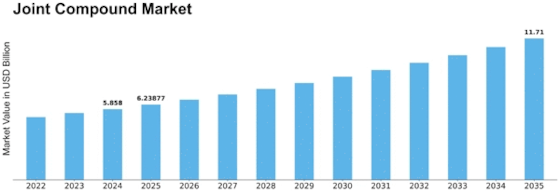

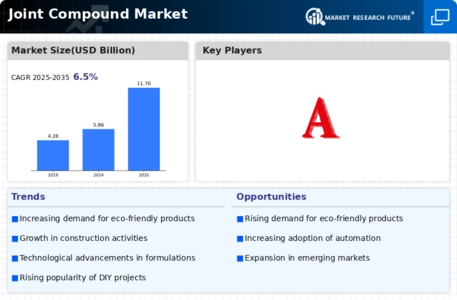
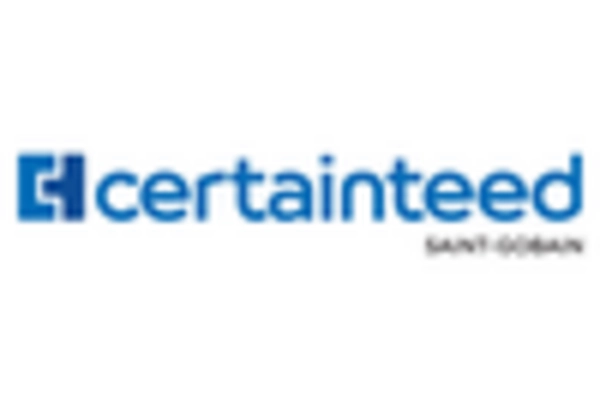
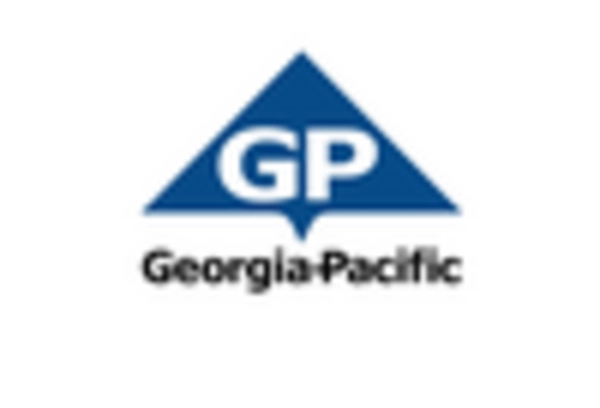
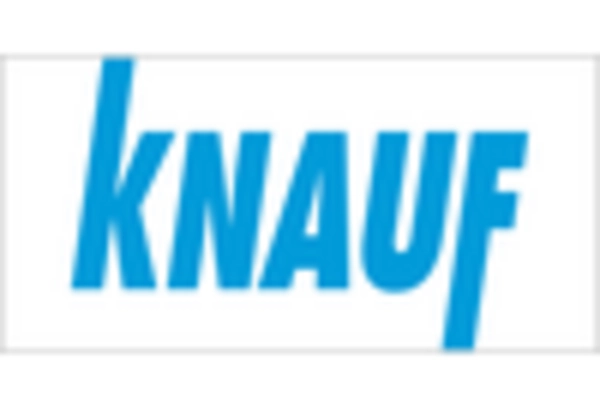
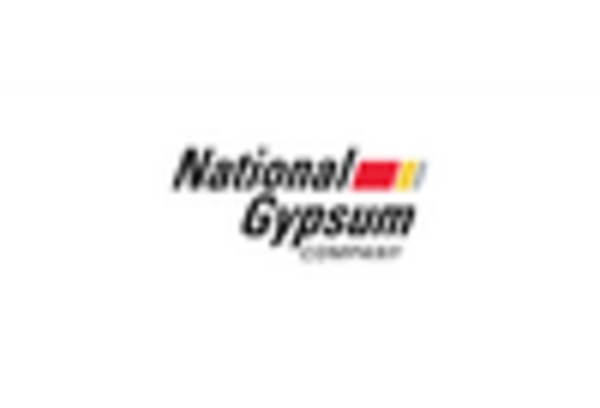
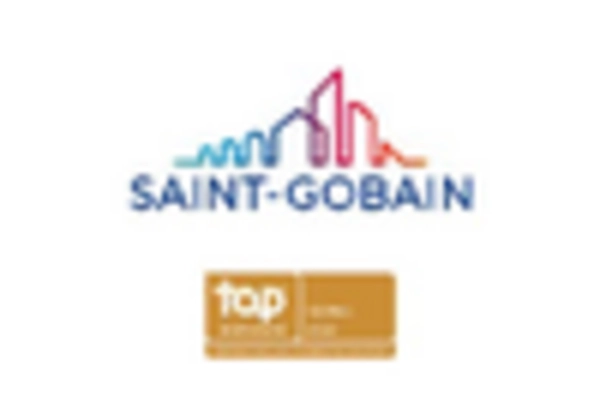
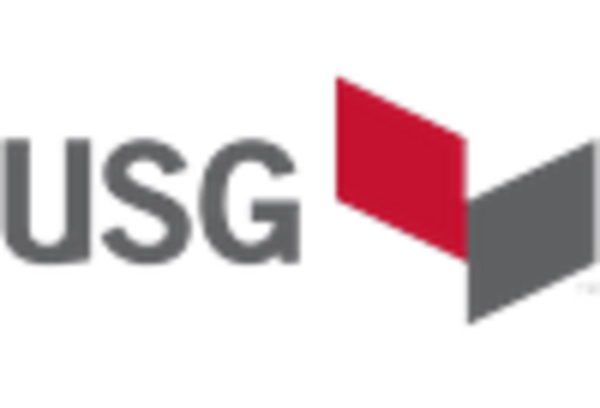

Leave a Comment